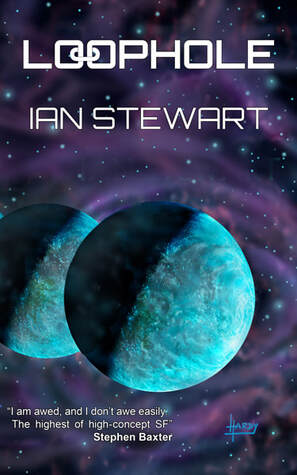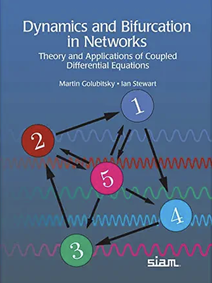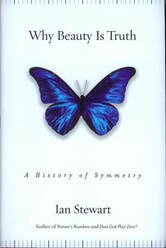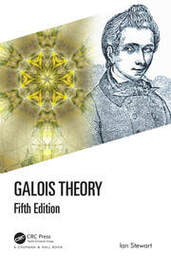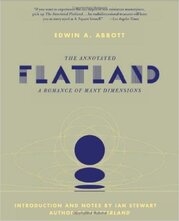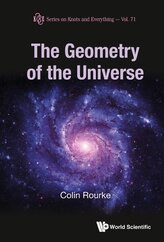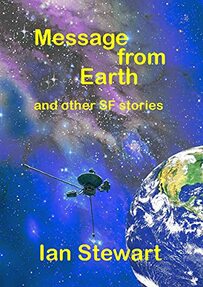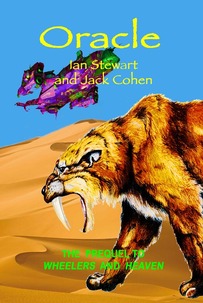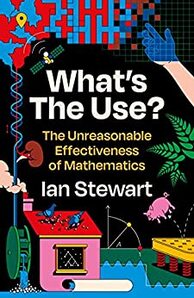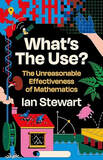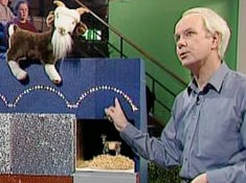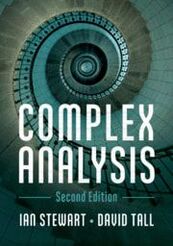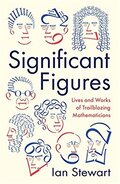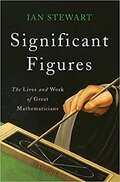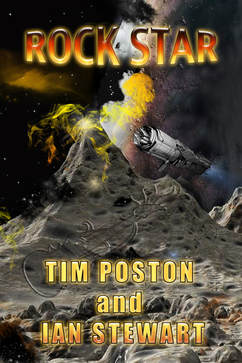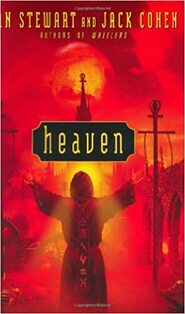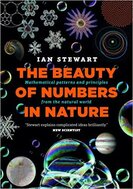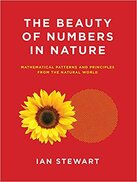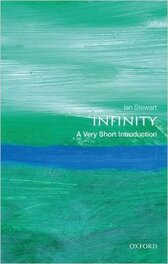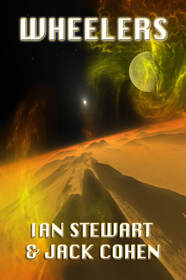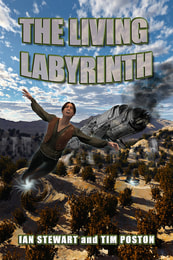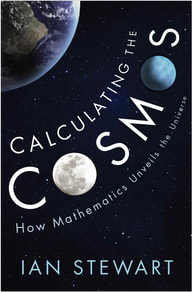|
Loophole
published by Elsewhen Press Don’t poke your nose down a wormhole – you never know what you might find! Two universes are joined by a wormhole pair that forms a ‘loophole’, with an icemoon orbiting through it, shared between two different planetary systems in the two universes. We are introduced to a civilisation with uploaded minds in virtual reality served by artificial humans; a ravening Horde of replicating machines that kill stars; real humans from a decrepit system of colony worlds; and a race of hyperintelligent but somewhat vague aliens.
Who will close the loophole… who will exploit it? |
Stephen Baxter, award-winning author of the Xeelee sequence, Time Slip and many others, said, about Loophole:
“When universes collide … A multicosmos at war in a scenario of staggering, but scientifically authentic, invention … As if the Marvel multiverse collided with 2001: A Space Odyssey … I am awed, and I don’t awe easily. The highest of high-concept SF.” Henry Gee, Senior Editor at Nature, author of A (Very) Short History of Life on Earth and the Sigil SF trilogy, said: “There’s Hard SF. There’s Wide-Screen Baroque. Now with Ian Stewart’s Loophole we have Wrap-Around Rococo. Daringly inventive, Loophole is a mind-fryingly, Möbius-twistingly intense SF adventure of the first order.” |
|
Theory and Applications of Coupled Differential Equations
Martin Golubitsky and Ian Stewart xxxi+836 pages |
In recent years, there has been an explosion of interest in network-based modeling in many branches of science. This book synthesizes some of the common features of many such models, providing a general framework analogous to the modern theory of nonlinear dynamical systems. How networks lead to behavior not typical in a general dynamical system and how the architecture and symmetry of the network influence this behavior are the book's main themes.
|
|
A history of symmetry
|
At the heart of relativity theory, quantum mechanics, string theory, and much of modern cosmology lies one concept: symmetry. Why Beauty Is Truth narrates the history of the emergence of this remarkable area of study.
|
|
An updated and corrected edition with an extra chapter on more recent developments in the subject. |
Fifth Edition of Galois Theory
ISBN 9781003213949 September 7, 2022 Chapman and Hall/CRC 371 Pages 38 B/W Illustrations |
|
Over the past two decades, Nature — one of the world's leading science journals — has from time to time published weekly series of science fiction short stories under the title Futures. The word limit was one thousand words. The first three series appeared in the printed version of the journal, plus another series in Nature Physics; the stories then moved online. This collection contains twelve of my published Futures tales, |
together with similar unpublished stories, three mathematical songs, one computer-related poem, articles about Terry Pratchett's Discworld, and a series of puzzles presented as a connected story about the infamous detective Hemlock Soames and his sidekick Doctor Watsup. Read about a missed prehistoric opportunity, how human history became entangled with a quantum computer simulation, intelligent pigs, the alien holiday from Hell, an unorthodox view of extremophiles, and the lamentations of Schrödinger's cat in the form of twelve-bar blues.
|
|
Colin Rourke's book on an alternative to standard 'Big Bang' cosmology. Discusses flaws in the usual theories and presents a consistent theory that differs considerably from the standard story.
|
Message From Earth
|
Message from Earth is an anthology of all my SF short stories that are not available elsewhere. Some originally appeared in Analog, Interzone, and Omni, and I’ve thrown several unpublished ones in as well for good measure. The exceptions are the ‘Billy the Joat’ stories from Analog (which are included in Jack of All Trades), the ‘synte planet’ (Qish) stories with Tim Poston (included in The Living Labyrinth), and my ‘Futures’ stories from Nature and Nature Physics, which can be found free online and are also collected in Pasts, Presents, Futures.
As a bonus, I’ve also included, as exercises in world-building, the descriptions of four alien worlds and ecosystems that Jack Cohen and I designed in September 2003 for the Science Museum, London. |
|
The slab bore curious markings, but nothing resembling writing. Hatsutmer could neither recognise what it was, nor of what material it had been made. Not wood, not clay, not metal, not any stone that he could put a name to...
Any simpleton could see what it was not. What it was... even the wisest of men could not say. But he knew what the strange slab exuded. He could feel it, quickening his blood, tugging at his lifesoul. Power. It is North Africa in 17,000 BC. North of the Saltwater Sea, towering cliffs of solid water are melting. A remnant group of Neanderthal lionfaces still survives, pushed south by the ice, along with many prehistoric beasts. They have been subjugated by a pre-Egyptian civilization, the Water People. A trainee priest finds a strange speaking-stone in the desert, and uses it to become High Priest of the Hippopotamus Cult. His wife Nemnestris is High Priestess of the Followers of Nefteremit the Lilypad Goddess, and together they have the prophecy business sewn up. But Nemnestris has a secret, a past indiscretion whose discovery could destroy them both. The lionface Jackalfoot-Snakebite is Beastmaster to the child-King Insh’erthret. The King’s evil uncle, the Regent Sitaperkaw, wants the throne and is willing to do murder to get it. Former warrior Yulmash and his enemy Khuf the Shrewd are getting ready to fight to the death for the gladiatorial Championship, where Jackalfoot’s favourite beast, the sabretoothed lion Sickleface, is certain to be slaughtered. Yulmash’s wife, the Princess Azmyn, |
is up to her neck in palace intrigues without realising she is being manipulated. The marriage has failed, and Yulmash is hopelessly enamoured of the lionface herbalist Foxglove-Spearbreaker, but miscegenation is forbidden.
Unknown to any of the Water People — except Bil, the manager of the Arena — criminal pandemons from the far reaches of the Galaxy are covertly recording contests in the arena for their perverted clients, concealed in transparency suits. But when a magnetotorus herd migrating from a distant star arrives in the system, the plasmoids living in the Sun become aware of the pandemon menace, and the pandemon’s stolen Ship decides to subvert its programming and take a hand, it all starts to get complicated... |
|
Many people think mathematics is useless. They're wrong. In the UK, the 2.8 million people employed in mathematical science occupations contributed £208 billion to the economy in a single year -- that's 10 per cent of the workforce contributing 16 per cent of the economy.
What's the Use? asks why there is such a vast gulf between public perceptions of mathematics and reality. It shows how |
mathematics is vital, often in surprising ways, behind the scenes of daily life. How politicians pick their voters. How an absurd little puzzle solved 300 years ago leads to efficient methods for kidney transplants. How an Irish mathematician's obsession with a new number system improves special effects in movies and computer games. How SatNav relies on at least six mathematical techniques. And how a bizarre infinitely wiggly curve helps to optimise deliveries to your door.
|
|
Do Dice Play God?
Uncertainty lurks in every consideration of the future – the weather, the economy, the sex of an unborn child. It's no wonder that, throughout that history, we have attempted to define, understand, and limit uncertainty — we prefer a surprise party to a surprise asteroid. We began our quest to make certain an uncertain world by reading omens in livers, tea leaves, and the stars. Driven by curiosity, competition, and a desire to be better gamblers, pioneering mathematicians and scientists |
began to reduce wild uncertainties to tame distributions of probability and statistical inferences. But, even as unknown unknowns became known unknowns, we discovered that some problems are unsolvable. As we realized how omnipresent and varied uncertainty is, we encountered chaos, quantum mechanics, and the limitations of our predictive power.
Touching on gaming, probability, statistics, financial and weather forecasts, censuses, medical studies, chaos, quantum physics, and climate, Do Dice Play God? makes one thing clear: a reasonable probability is the only certainty. |
|
The Royal Institution's free online archive of videos of past Christmas Lectures now includes the five lectures I gave in 1997:
• Sunflowers and snowflakes • The pattern of tiny feet • Outrageous fortune • Chaos and cauliflowers • Fearful symmetry (with the tiger!) |
|
This new edition of a classic textbook develops complex analysis from the established theory of real analysis by emphasising the differences that arise from the richer geometry of the complex plane. Key features are the use of simple topological ideas to translate visual intuition to rigorous proof, and, in this edition, addressing the conceptual conflicts between pure and applied approaches head-on. The first edition has been clarified and corrected. Three new chapters discuss infinitesimals, homology, and preview advanced topics.
|
Significant Figures Lives and Works of Trailblazing Mathematicians Succinct summaries of 25 of the most influential mathematicians of all time, from Archimedes to modern day giant William Thurston. With short descriptions of their most significant works, the book provides a concise overview of what has been hot in math at different times in the discipline's history. Keith Devlin |
|
Ingredients
Rock Star — a planetless blue giant orbited by hundreds of millions of rocks forming a single vast asteroid field, subtly disobeying human laws of gravity and dynamics. An enigma concealing the greatest threat that humanity has ever encountered. Old Earth — polluted, damaged, all ice melted, ecosystems slowly dying. Most of its people live in the polar regions, in floating cities, or in undersea domes. Kept alive by external aid, imported down three closely guarded beanstalks. The Concordat — a loose-knit federation of former Old Earth colony worlds and their own colonies, wealthy beyond measure. Imposed Quarantine on the birth world of humanity 1700 years ago, denying it access to the stars, except for carefully vetted colonists. Its ultimate power is a monopoly on the means of interstellar travel. Ira da Terra — a person and a liberation movement. Terra-ists will stop at nothing to free Earth from Concordat dominion and repression, and open the path to the Galaxy. |
Church of Cthulhu — surviving in the remnants of drowned Manhattan, waiting for their souls to be eaten when the stars are right.
Qish — a lost colony, rediscovered in Living Labyrinth, which has lost most human science but developed tech based on syntei. Syntei — matter transmitters that grow on trees. Reaching the Concordat, syntelics threaten its very basis … even as it faces the danger from Rock Star. Nazg — a system with twenty-three inhabited worlds and innumerable artificial habitats. Home to Salim Sisters, the Concordat’s most advanced hi-tech corporation. Valkyrie — an obsolete Da Silva caltrop, used to train candidates for Galactic citizenship, twice destroyed. Its impossibly resurrected crew must work with the Syntelic League to save the human race from annihilation. Recipe Mix thoroughly and simmer over relentlessly increasing heat. |
|
paperback and kindle eBook.
Who were the mysterious PAXIAL? What were the enigmatic prisms that they left on a thousand worlds? Billy the Joat needs to find out, because the PAXIAL prisms are the key to finding his father, who disappeared on a covert mission when the Joat was a child. His taste for practical jokes keeps getting him into trouble with authority; his ability to solve impossible problems for the Quaternity, keeps getting him out of it. His investigations home in on the Etonians, an enormously powerful human family. The quest leads the Joat deep into Sharraby Breach, a forbidden region of distorted space-time... and what he finds there threatens not just his own future, but that of the entire human race. |
The sequel to Wheelers.
Still in print and available. Longing for nothing more than his simple trading life, Second-Best Sailor unwittingly teams up with Servant-of-Unity XIV Samuel and another unlikely ally to help stave off an invasion by a Cosmic Unity mission fleet. |
|
New edition of What Shape is a Snowflake?
with updated text and many new images Think of a zebra’s stripes, the complexities of a spider’s web, the uniformity of desert dunes, or the spirals in a sunflower head … think of a snowflake. Elegantly illustrated, The Beauty of Numbers in Nature shows how life on Earth follows the principles of mathematics. Each chapter looks at a different kind of patterning system and the mathematics that underlies it.
|
Infinity has connections to religion, philosophy, metaphysics, logic, physics, and mathematics. The infinitely large is intimately related to the infinitely small (infinitesimal). Cosmologists wonder whether space and time are infinite. Philosophers and mathematicians from Zeno to Russell have posed numerous paradoxes about infinity and infinitesimals. Mathematicians use infinity to answer practical questions that do not appear to involve the infinite.
|
|
Science fiction novel written with Jack Cohen.
eBook from ReAnimus Press. Paperback and eBook from amazon. A (slightly) revised edition of the 2000 novel. |
In the year 2270 strange wheeled artifacts—wheelers—are found buried beneath the icy surface of Callisto. No one knows what they were used for or who left them there. At the same time, it is discovered that the moons of Jupiter have moved . An expedition finds that Jupiter is inhabited by a race of balloon-like aliens, who defend their world against comet strikes by moving their moons. This time they are aiming an incoming comet directly at Earth! An Earth child with an intuitive understanding of animal behavior becomes the key to contacting them—and joining forces with them to save the world.
|
|
Sam, Jane, Felix, Elzabet (Lady Elzabet of Quynt), Tinka, and Marco have just been brought together — a mismatched bunch overqualified and highly-skilled trainees from all corners of the Concordat, assembled on a small moon, taking their first steps toward Starhome and qualification as galactic citizens. If they survive. Their first training mission: An extended voyage to the boondocks, out in space where all they can damage is themselves (and a very expensive Da Silva starship). Everything starts out normally, quantum jumping through space-time congruences as the Da Silva drive does... until it's very much not normal, and they find themselves in a very strange place indeed. As they explore, they become aware of a dramatic secret which, if they can report it to the Concordat, will change everything...
|
|
|
An up-to-the-minute guide to the cosmos. The formation of the Earth and its Moon, the planets and asteroids of the solar system, the Galaxy and the universe. Describes the architecture of space and time, dark matter and dark energy, how galaxies, stars and planets form, why stars implode, how everything began, and how it’s all going to end. Parallel universes, fine-tuning of the cosmos for life, what forms alien life might take, and the likelihood of life on Earth being snuffed out by an asteroid.
Mathematics has been the driving force in astronomy and cosmology since the ancient |
Babylonians. Kepler’s work on the orbits of the planets led Newton to formulate his theory of gravity. Two centuries later tiny irregularities in the motion of Mercury inspired Einstein's General Relativity. Eighty years ago ago the discovery that the universe is expanding led to the Big Bang theory. Cosmologists then added new features — inflation, dark matter, and dark energy — to make the Big Bang fit observations. But does inflation explain the structure of today’s universe? Does dark matter exist? Could a new scientific revolution challenge the long-held orthodoxy and once again transform our understanding of the universe? |
|
AUTHOR PAGE ON AMAZON
Books, photos, twitter feed, and more |
MANIFOLD magazine
All twenty issues of this cult student mathematical fanzine from the 1960s and 70s are now free online on this site. |
